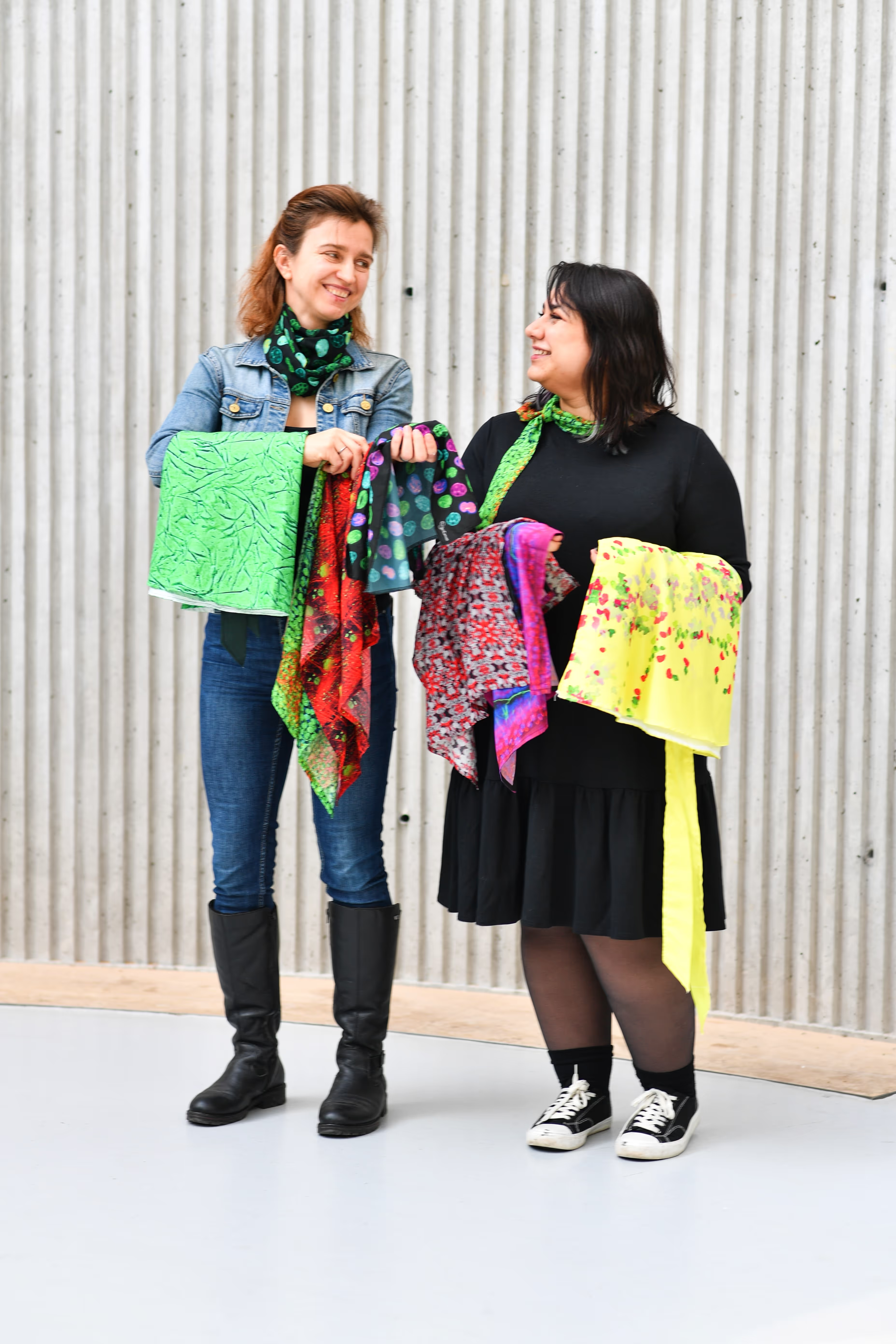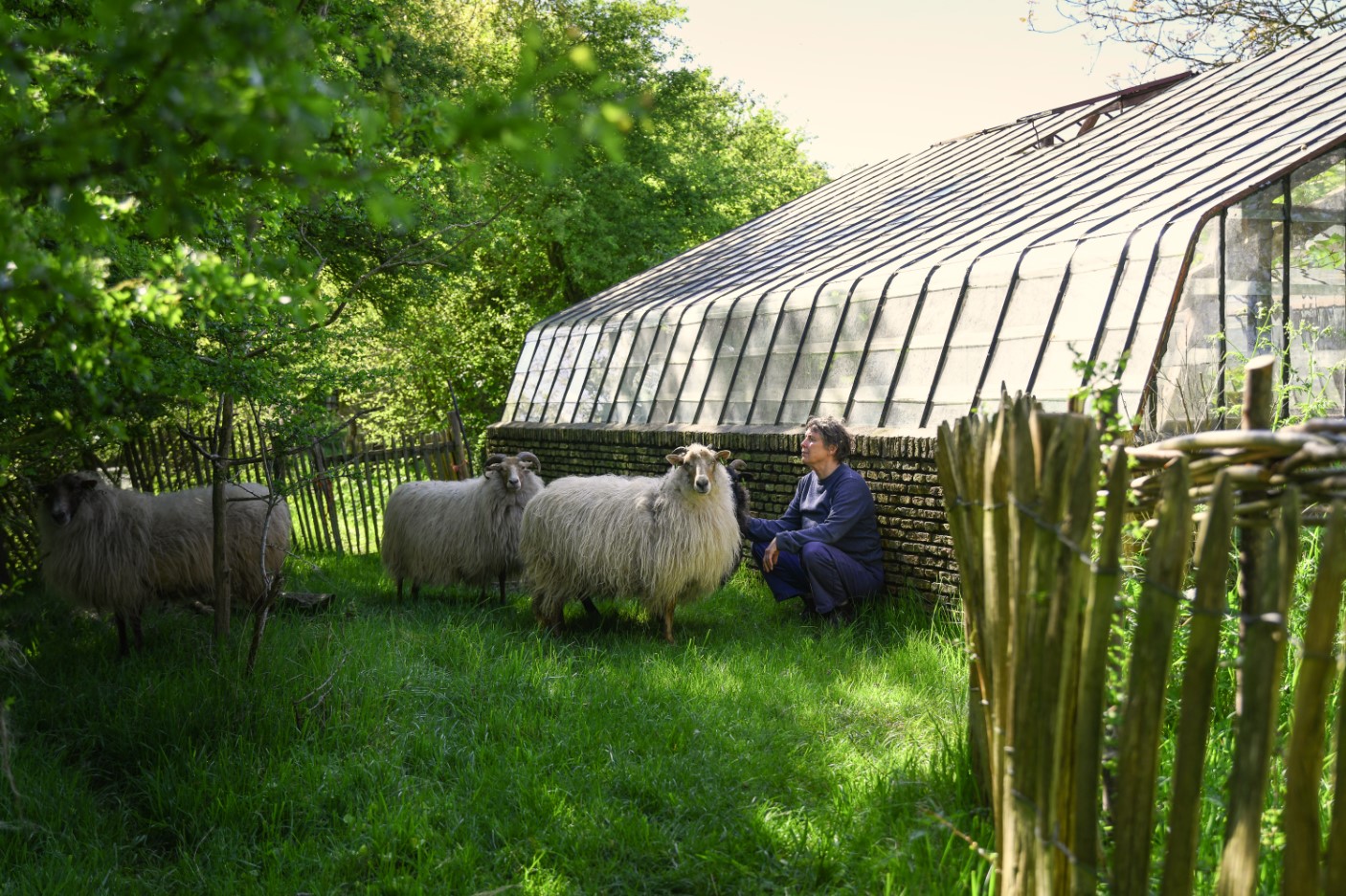Author: Gabriela Peringerová, Masaryk University • Photo: Jan Kodeš, Masaryk University
Maria is immersed in the fascinating world of cells and microorganisms every day at work. Her microscope is a gateway to a world full of colours, shapes and structures hidden to the naked eye. But she has decided not to keep the wonders to herself. She recreates the marvellous images from her Petri dishes and microscopic samples in the world of fashion – in the form of unique patterns on textiles.
Maria has lived in the Czech Republic with her family for over ten years. A graduate of Saint Petersburg State University with a degree in cellular biology, she became a researcher at CEITEC when it was founded. Working in the field of structural biology now, she and her colleagues are currently involved in a project aimed at finding an effective cure for cancer.
Not so long ago, the very idea of having an e-commerce business, fashion shows and workshops was something she would have never imagined. Still, she has always had artistic skills and talent. “It was the ability to see colours and patterns. Whenever I would see something interesting in nature, it had my full attention. Seeing cells under a microscope, I suddenly had many patterns everywhere. It all came together and the basic idea was there. I felt sorry nobody else was able to see these patterns, and I decided to bring them to life so that everybody could see them,” she says, explaining how it all started.
A two-dimensional picture on a wall was not enough. She wanted to show how vibrant the world of cellular structures actually is. “I decided to have the patterns printed on textiles which move in three dimensions and change shapes, because the microscopic sample is a living organism as well,” Zlobina says.
Special techniques are necessary to actually put the microscopic patterns on the textiles with only minor adjustments. The essence remains. “I do not redraw anything. I actually present what you can see under the microscope, including colours because we use various dyes in laboratories to enhance certain cellular structures.”

Photo: Jan Kodeš, Masaryk University
The result is a rich palette of patterns inspired by cellular structures of the microcosmos in detail. Her first patters have remained the most popular of her creations – actin filament, glucose molecules, stem cells and mitosis in fibroblasts.
In addition to being a scientist, Maria has for some time been a businesswoman. She had to find suitable textiles, printing works and customers. “The world of marketing and advertising is somewhat challenging for a scientist like me. Showcasing my work to the public is the biggest challenge. But my workshop and fashion show here at CEITEC were very well received,” the scientist says, adding that the spectrum of textiles suitable for digital printing of her patterns is limited.
At the very beginning, her potential business partner required that she purchase at least twenty metres. Maria accepted the challenge with all four patterns, and now she would like to send them abroad. She has even started sewing, and her work is now available online: scarves, bowties, skirts, neckties, hair bands and even pottery.
The idea surprised her husband, who too holds a degree in biology, and her very supportive colleagues as well. No matter how successful she may become in the world of fashion, under no circumstances would she consider changing her main profession. “What I am doing may be a way of popularising science and research. Science is the most important thing for humanity in all areas, because scientists are always searching for the best solution,” she notes, adding that art and science can complement and support one another.
While microscopes allow Maria to study the world in the greatest of detail, her art gives her the space for creativity and the opportunity to share beauty with everyone. She is an inspiring example of how passion for science can meet artistic talent and create something unique and beautiful.




%20(2)%20kopie.jpg)